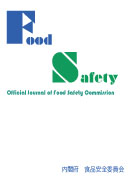
- Issue 4 Pages 65-
- Issue 3 Pages 41-
- Issue 2 Pages 25-
- Issue 1 Pages 21-
- |<
- <
- 1
- >
- >|
-
Kazuhiro Chiku, Ai Yamada, Yui Shibasaki, Yoshiki Makino, Taidoh Komat ...2023 Volume 11 Issue 2 Pages 25-33
Published: 2023
Released on J-STAGE: June 23, 2023
Advance online publication: April 08, 2023JOURNAL OPEN ACCESS FULL-TEXT HTMLWe investigated the time-dependent acrylamide formation in mung bean sprouts during stir-frying under high and medium heat conditions. The acrylamide concentration range detected using the 3-mercaptobenzoic acid derivatization LC-MS/MS method was from below 29 ng/g [limit of detection (LOD)] to 6,900 ng/g. We also investigated the acrylamide levels in mung bean sprouts cooked using four methods while retaining their fresh firm texture using the thiosalicyclic acid derivatization LC-MS/MS method. The acrylamide concentration in microwave oven-cooked sprouts was below 16 ng/g (LOD). The samples cooked by stir-frying, parching, or boiling contained an acrylamide concentration above the LOD but below 42 ng/g [limit of quantification (LOQ)], except for one replicate of a stir-fried sample, whose acrylamide concentration was 42 ng/g. Bean sprouts are popular affordable vegetables, and when stir-fried, their acrylamide concentration is assumed to strongly affect the exposure of the Japanese population to acrylamide. Because the acrylamide concentration range of fried bean sprouts is as broad as mentioned above, the selection of a representative concentration value is difficult. A precise survey and data about acrylamide formation in relation to the bean sprout components before heating, their changes occurring during storage, and the cooking methods and conditions used are needed to estimate the exposure of the Japanese to acrylamide. Here, we showed that rinsing the sprouts before frying and frying them for a short time while mixing them well, while retaining the fresh firm texture to avoid burning and shriveling the sprouts is effective in decreasing the amount of acrylamide formed.
View full abstractDownload PDF (2203K) Full view HTML
-
“Valencene” Produced Using Rhodobacter Sphaeroides 168 strain (Genetically Modified Foods and Feeds)Food Safety Commission of Japan2023 Volume 11 Issue 2 Pages 34-35
Published: 2023
Released on J-STAGE: June 23, 2023
JOURNAL OPEN ACCESS FULL-TEXT HTMLFood Safety Commission of Japan (FSCJ) conducted a safety assessment on a food additive: flavoring “Valencene”, which is produced using Rhodobacter sphaeroides 168 strain based on documents mainly submitted by the applicant. Safety of the inserted genes including toxicity and allergenicity of the proteins produced from the inserted genes, recombinant and host protein residues, and others were evaluated based on the guideline. In the evaluations no risk due to use of recombinant technology was found in the bio-production of “Valencene”. From the identified chemical structures, toxicological findings and also estimated intakes of non-active ingredients detected in “Valencene”, none of safety issues were expected for them. From the above evaluations, FSCJ concluded that no concern relevant to human health is raised on the food additive, “Valencene” produced using Rhodobacter sphaeroides 168 strain.
View full abstractDownload PDF (582K) Full view HTML -
Food Safety Commission of Japan2023 Volume 11 Issue 2 Pages 36-39
Published: 2023
Released on J-STAGE: June 23, 2023
JOURNAL OPEN ACCESS FULL-TEXT HTMLFood Safety Commission of Japan (FSCJ) conducted a risk assessment of a sulfonanilide herbicide, dimesulfazet (CAS No. 1215111-77-5), based on results from various studies. The data used in the assessment include the fate in plants (paddy rice), residues in crops, fate in animals (rats), subacute toxicity (rats, mice and dogs), chronic toxicity (dogs), combined chronic toxicity/carcinogenicity (rats), carcinogenicity (mice), acute neurotoxicity (rats), subacute neurotoxicity (rats), two-generation reproductive toxicity (rats), developmental toxicity (rats and rabbits), and genotoxicity. The major adverse effects of dimesulfazet from those test results were observed in body weight (suppressed body weight gain in all test results), kidneys (increased weight in rats) and urinary bladder (urothelial hyperplasia in mice and dogs). None of carcinogenicity, neurotoxicity and genotoxicity were observed. No obvious effects on fertility were detected. The lowest no-observed-adverse-effect level (NOAEL) obtained from all the studies was 0.39 mg/kg bw per day in two-year combined chronic toxicity/carcinogenicity study in rats. On the basis of this value, FSCJ specified an acceptable daily intake (ADI) of 0.0039 mg/kg bw per day after applying a safety factor of 100 to the NOAEL. The lowest NOAEL for potential adverse effects after a single oral administration of dimesulfazet was 15 mg/kg bw per day in the developmental toxicity study in rabbits. FSCJ thus specified an acute reference dose (ARfD) of 0.15 mg/kg bw after applying a safety factor of 100 for women who are pregnant or might be pregnant. For the general population, an ARfD of 0.41 mg/kg bw after applying a safety factor of 300 (additional factor 3 by applying LOAEL of 125 mg/kg bw resulted from acute neurotoxicity study in rats).
View full abstractDownload PDF (592K) Full view HTML
- |<
- <
- 1
- >
- >|